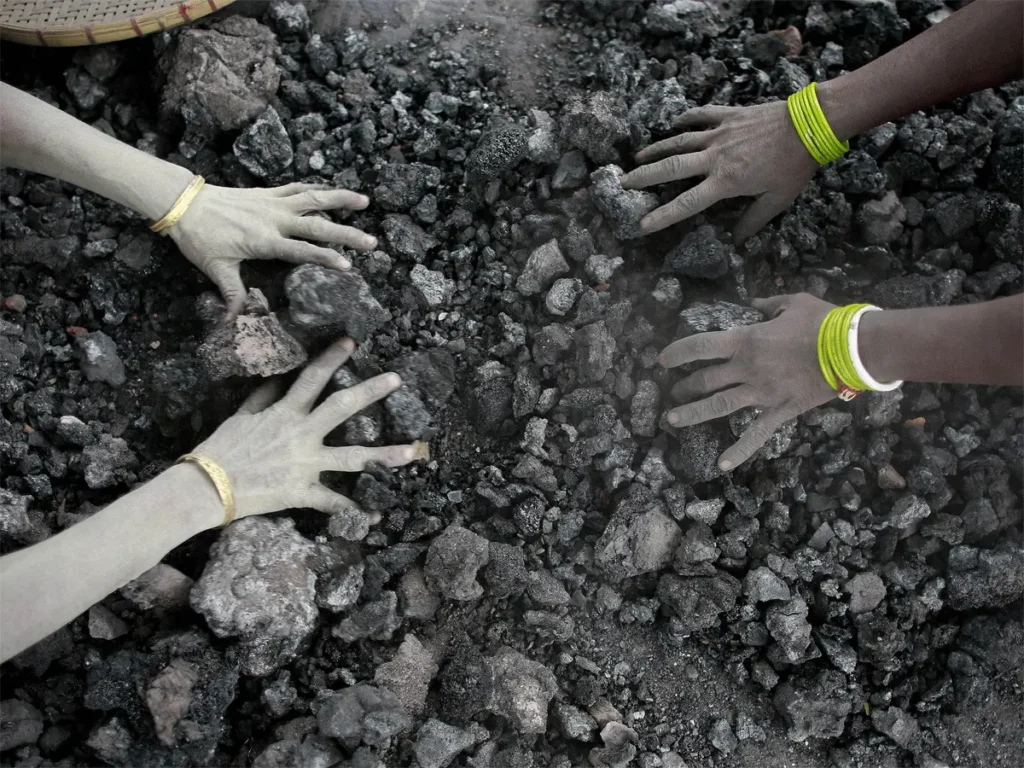India has achieved a historic milestone by surpassing 1 billion tonnes of coal and lignite production in the financial year 2023-24, signaling robust growth and increased energy security for the nation.
Current Status of Coal Sector in India
- India is the second largest producer of coal in the world, after China, and the fifth largest country in terms of coal deposits.
- Coal India Limited (CIL) is the largest producer of coal in India, contributing around 82% of the country’s coal production.
- The main coal reserves are in the east, including Jharkhand, Odisha, and Chhattisgarh states, and also in the central state of Madhya Pradesh.
Production:
- The combined coal and lignite production stood at 1,039.57 MT in FY23-24, with coal production reaching 997.39 MT, marking an 11.67 per cent increase over the previous fiscal year.
- Coal dispatch also surged to 973.31 million tonnes, with the power sector receiving the majority of allocations, indicating robust growth and demand in the energy sector.
- As of March 2024, India maintains a coal stock of approximately 161 MT, ensuring uninterrupted power supply nationwide and bolstering energy security.
Enhanced Logistics:
- The railways played a pivotal role in facilitating coal transportation, with an average of 393.1 daily rakes supplied during FY 2023-24, showcasing a notable growth of 5.8%.
- Additionally, the implementation of First Mile Connectivity Projects has optimized coal transportation, enhancing overall logistics efficiency in an eco-friendly manner.
Imports:
- The share of coal imports in India has declined from 22.48% in April 2023 to January 2024 to 21%.
- India’s efforts to boost domestic production have resulted in a reduction in coal imports for blending purposes, with imports decreasing from 30.80 million tonnes in FY 2022-23 to 22.20 million tonnes in FY 2023-24.
- The reduction in coal imports has led to significant cost savings amounting to Rs 82,264 crore, showcasing the economic benefits of increased domestic production.
Challenges of coal sector in India:
Environmental concerns:
- Forest destruction: Coal mining can destroy forest areas that provide wildlife habitats.
- Pollution: Underground mining can cause toxic waste from earth and rock exposed to air and water.
- Burning coal contributes to nitrogen oxides (NOx), which contribute to smog and respiratory illnesses, and particulates, which contribute to smog, haze, and respiratory illnesses and lung disease.
- Climate change: Coal, while widely available and conventional, emits nearly twice as much carbon dioxide as natural gas and about 60% more than oil, contributing significantly to greenhouse gas emissions and climate change.
- Land use: Mining can impact land use and conversion.
- Groundwater depletion: Mining can impact groundwater.
Transportation issues
- High costs: All major coal fields are in Bihar, Madhya Pradesh, Orissa, and West Bengal, making coal transportation expensive.
- Long distances: Coal needs to be transported across long distances.
Monopolistic market structure
- Lack of accountability: The coal sector lacks accountability and transparency.
- Weak planning: The coal sector has weak planning and inter-agency coordination.
Other challenges include:
- Delayed environment and forest clearances: The environment ministry has classified ecological sensitive areas as “Go and No Go areas”.
- Land acquisition problems: The allocation process is arbitrary, discretionary, and non-transparent.
- Underground mining: Underground mining is prone to cave-ins and explosions.
- High outstanding dues: Distribution companies have high dues to generation companies, making it difficult for generation companies to pay for coal and maintain stocks.
- Supply and demand: The supply of coal has not kept pace with the increase in demand.
- Low quality: A significant portion of India’s coal reserves resemble Gondwana coal, characterized by low calorific value and high ash content.
Key reforms undertaken in the Coal sector:
Enactment of CMSP Act- 2015:
- The Coal Mines Special Provisions Act, 2015, introduced transparent auction processes, encouraged private participation, and generated revenue for the government, addressing the aftermath of the Supreme Court’s cancellation of coal block allocations in 2014.
Mines and Minerals (Development and Regulation) Amendment Act:
- This amendment enhanced transparency and efficiency in mining license allocation, introducing Composite Prospecting Licence-cum-Mining Lease (PL-cum-ML) specifically for coal.
Permitting 100% foreign direct investment:
- This includes removing eligibility criteria and the need for coal mining experience to participate in the auction process.
Commercial Coal Mining:
- Launched in 2020, attracting private investments and fostering competition.
- Creation of over three lakh new jobs directly and indirectly.
FDI and Technological Advancement:
- Allowing 100% FDI in coal mining has attracted global expertise and advanced technologies, further boosting efficiency and productivity.
- It has opened new avenues while contributing to economic growth.
Single Window for E-auction of Coal:
- Introduction of a single e-auction window streamlined coal sales, removing market distortions, increasing operational efficiencies, and boosting domestic coal demand.
Ending captive mining regime:
- Transitioning away from captive mining, India has facilitated commercial mining operations, allowing for the sale of excess production.
Ref: Source
| UPSC IAS Preparation Resources | |
| Current Affairs Analysis | Topperspedia |
| GS Shots | Simply Explained |
| Daily Flash Cards | Daily Quiz |



